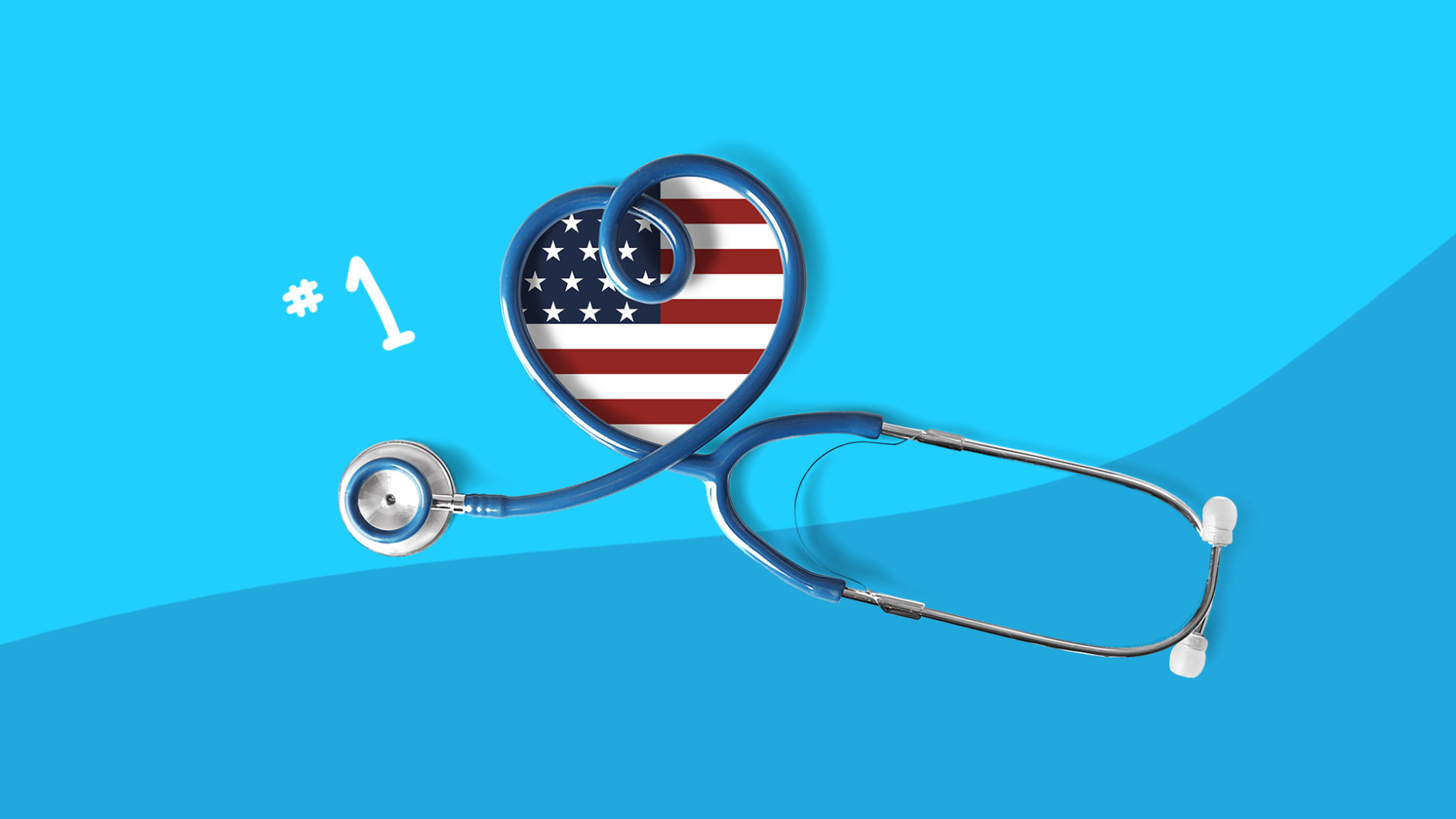Every year, the United Health Foundation ranks the nation’s physical, mental, and social well-being by state. The America’s Health Rankings report is an annual snapshot of advances (and challenges) that guides policy-makers, public health officials, and community leaders. Using comprehensive data from 19 sources, across 5 categories, and 55 measures of health, it’s a reliable benchmark of which area is the healthiest—and unhealthiest—in the United States.
Wondering where your state’s health score stacks up?
The healthiest states in the U.S.
While the results across the U.S. as a whole can provide an essential understanding of the overall health of the nation, huge insight can be gained by looking at the states individually.
The top 5 healthiest states are:
Here’s why.
#1 Vermont
Vermont moved up three spots from 2018 to become the healthiest state in the U.S. in 2019. This improvement was largely driven by a significant increase (24.3% to 36.7%) in the percentage of adults with less than a high school education who reported high health status. In other words, Vermont made huge strides in decreasing the disparity of health status this year. The state also comes in well below the 8.8% national average for uninsured residents at 4.3%.
That said, there is always room for improvement. For example, Vermont’s incidence of pertussis (whooping cough) is much higher than the national average, reaching 17.3 cases per 100,000 compared to just 5.8 cases per 100,000 annually.
#2 Massachusetts
Although drug deaths in Massachusetts have increased 87% over the past three years, the state has maintained its No. 2 ranking thanks largely to its low prevalence of obesity and increased public health funding.
#3 Hawaii
Down from its 2018 No. 1 ranking, Hawaii still has impressive health figures. Consistently in the top five, the majority of its population is insured; plus, the state has a very low rate of obesity.
#4 Connecticut
Although Connecticut has a comparatively low cardiovascular death rate and the number of smokers, drug deaths in the state have increased by 140% from 11.0 to 26.4 deaths per 100,000 population in the past five years.
#5 Utah
Consistently ranking as the fifth healthiest state in America, Utah has the lowest smoking rate in the country at 9%, and one of the highest rankings for physical activity. There is however room for improvement by increasing the immunization coverage of children, where they currently rank 40th.
The unhealthiest states in the U.S.
On the other end of the spectrum, it is important to understand which states need the most help and identify key areas that should be focused on to improve the health of their communities.
Here are the states with the biggest room for improvement:
#46 Oklahoma
Although smoking in Oklahoma has decreased 25% since 2012, the state still has one of the highest rates of smoking in the country with 19.7% of adults participating in the habit. The state also has a high number of uninsured persons at 14.2%, compared to Vermont’s 2.8%
#47 Alabama
Moving up from the 48th spot in 2018, improvements in Alabama’s percentage of high school graduates has seen its population become healthier. That said, there is room for improvement in reducing the prevalence of diabetes and poor cardiovascular health within Alabama communities.
RELATED: Diabetes medications and treatments
#48 Arkansas
As with many of the states with significant room for improvement, Arkansas has a high rate of obesity, and an increased prevalence of diabetes (up 24% from 2012).
#49 Louisiana
In great news, the number of Louisiana residents without health insurance has decreased by 60% over the past seven years. That said, the largest areas for improvement are high rates of obesity and a high cardiovascular death rate. Another area of concern is the huge increase in drug deaths over the past five years, increasing 65% from 12.9 to 21.3 deaths per 100,000 population.
#50 Mississippi
Mississippi comes in at the bottom of the state ranking for 2019, dropping one place from 2018. This is largely because of its high infant mortality rate, 8.6 deaths per 1,000 live births, compared with 5.8 deaths per 1,000 live births nationally, and above average prevalence of obesity (39.5% compared to the national 30.9% figure). Mississippi also shows room for improvement with its population’s heart health, recording a high cardiovascular death rate at 363.2 deaths per 100,000, compared with 260.4 deaths per 100,000 nationally
On a positive note, Mississippi’s strengths include being well below the national average for drug deaths, with a rate of 12.1 deaths per 100,000 compared to 19.2 deaths per 100,000. In the wake of a national opioid epidemic, this is no small feat.
No one-size-fits-all approach will improve the population health at the state level. It requires a multi-pronged approach. According to the report, “Focusing on one measure alone likely does not improve health enough to change a state’s rank.” However, the information provided can be used to prioritize public health goals and spark much needed dialogue on how to improve state health.
What about the middle states?
It’s always easy to draw attention to the top and bottom performers in any study, but what about the states in the middle? What do they say about the health of America?
States like Montana (#24), Alaska (#27), Kansas (#29), Arizona (#31), and Florida (#33) all help highlight a trend of low access to healthcare providers, be it dentists, mental health providers, or primary care physicians. As has been a trend over the years, access to healthcare the population needs is holding back the health of these states. This is further demonstrated by their high levels of uninsured residents.
How did America perform on the whole?
There’s much to celebrate in the 2019 report, with significant improvements in a number of areas over the past year. On a national level, here are some of the key positive takeaways:
- Smoking rates decreased by 6%
- Nearly 1,200 fewer infant deaths
- Children in poverty is down 2% from 2018, and 20% since its 2013 peak
- The number of much needed mental health providers across the U.S. increased by 5%
On the other hand, the 2019 report also highlighted areas of concern. In identifying these areas, it is hoped they can be addressed and improved going forward:
- Suicide increased by 4%
- A 37% increase in the drug death rate, equalling more than 53,000 additional deaths over the last three years
RELATED: How pharmacists can help prevent prescription drug abuse
But what about trends over the past thirty years?
For the 30th anniversary, experts summarize key successes and difficulties from the past three decades of U.S. health. These are the key health improvements across the U.S. since 1990:
- 45% decrease in smoking
- 43% decrease in infant mortality
Importantly, the 2019 report was able to identify some key challenges that have developed across our communities over the past 30 years. Namely:
- 166% increase in obesity
- 148% increase in adult diabetes since 1996, now impacting approximated 30 million adults
- 17% increase in the suicide rate since 2012
- 104% increase in drug deaths since 2007
RELATED: Is phentermine for weight loss safe?
What happens now?
With the release of the 2019 report, advocates and policy-makers now have access to data that’s essential in helping build healthier communities. Leaders on both a state and national level can use the findings of the Annual Report, both over the past year and the past 30 years, to develop solutions that keep improving the nation’s health. For example, with the massive increase in adult diabetes over the past three decades, programs are being rolled out through communities aimed at educating people on how they can prevent the disease and prediabetes.
SingleCare is here to help. If you’re one of the millions of American’s affected by conditions such as diabetes, cardiovascular disease, or obesity, or any other condition for that matter, SingleCare can help you access the lowest prices on your prescription medication. Just search for your medication here and start saving. We also offer tons of information on our blog to help you learn about different conditions and medications, which you can check out here.











